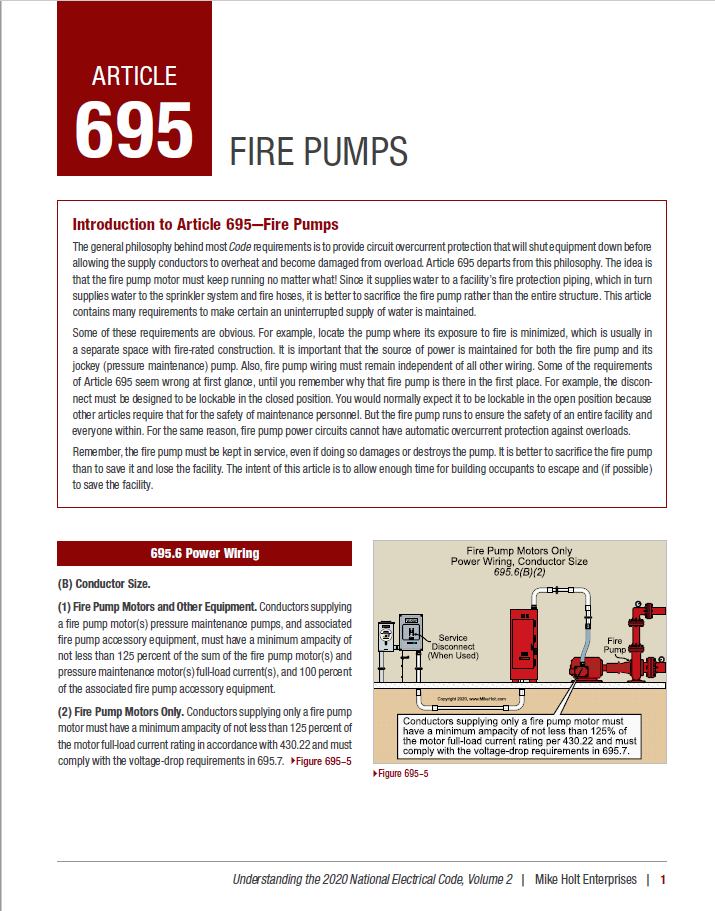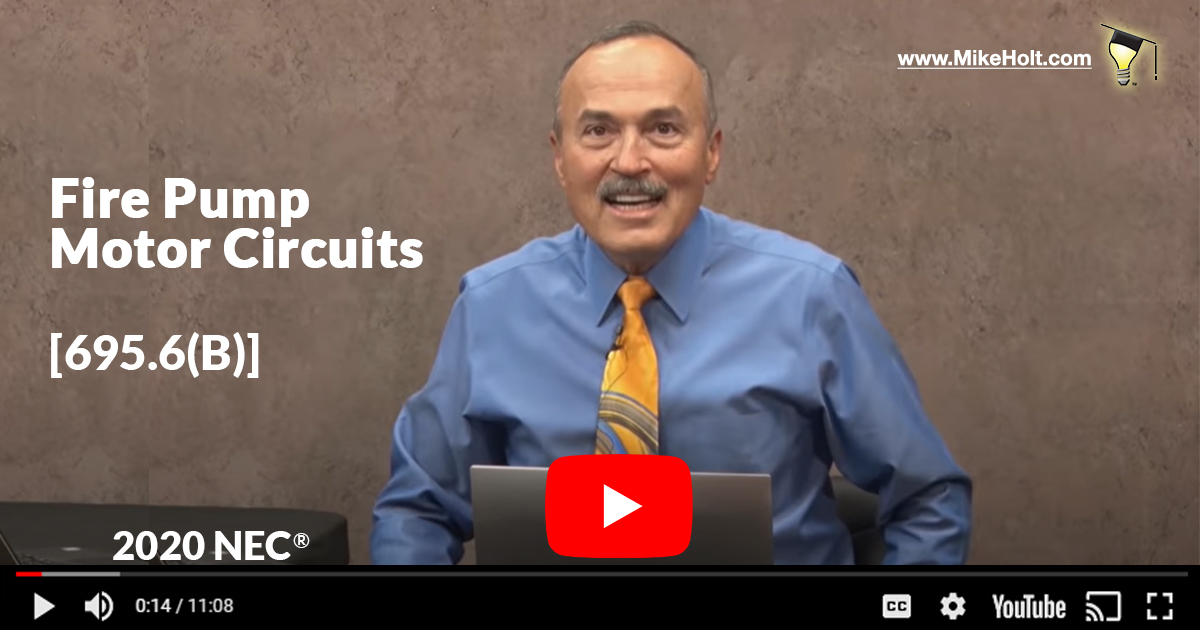|
Keeping up with the requirements of the Code should be the goal of
everyone involved in electrical safety. The following is what I feel is an
important rule in the 2020 NEC®, complete with
graphics and a video. I encourage you to use it as a training resource for
your organization, and share it with your colleagues.

| Fire Pump Motor Circuits [695.6(B)] |
The content below is extracted from
Mike Holt's Understanding the National Electrical Code, Volume 2, textbook, based on the 2020 NEC. Be sure to download the PDF to follow as you watch the video.
| |

Click here or on the thumbnail to the left to view or download the PDF of this rule. (2 pages, 408 KB)
|

|
|
Click on the image above to watch the video
|
Article 695 covers the electric power sources and interconnecting circuits for electric motor-driven fire pumps. A general philosophy in the Code is to provide circuit overcurrent protection that shuts equipment down before allowing the supply conductors to overheat and become damaged from overload. Article 695 departs from this philosophy. The idea is that the fire pump motor must keep running no matter what.
It is important to locate the pump where its exposure to fire is minimized, which is usually in a separate space with fire-rated construction. Since the pump supplies water to a facility's fire protection piping, which in turn supplies water to the sprinkler system and fire hoses. Article 695 contains requirements that serve to maintain an uninterrupted supply of water for the fire pump to run and ensure the safety of an entire facility and everyone within.
So how do we protect the fire pump supply conductors from being destroyed by the fire itself and what other service or feeder considerations help to maintain the safe operation of the fire pump system as a whole?
Read the text and be sure to watch this video where Mike and a panel of industry experts discuss the supply conductor requirements [695.6(A)] that help to ensure the overall intent of Article 695 which is to allow enough time for building occupants to escape and (if possible) to save the facility.
|
|
|
|
|
We'd
love to hear from you about this series, and the ways you're using it.
Send us your comments and feedback by clicking on "Post a Comment"
below. Look out for the next part in this series a month from now, and
please share with your colleagues. |
This content is extracted from Mike Holt's Understanding the National Electrical Code, Volume 2, textbook, based on the 2020 NEC Program.
|
|

